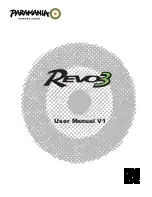
Flying with a wet paraglider
Flying with a wet glider creates a risk of deep stall . Deep stall is of-
ten the result of a combination of factors . The weight of the wet cano-
py goes up, and this increased weight increases the angle of attack,
which always puts the glider nearer the deep stall limit . Added to this,
water drops on the top surface have a detrimental effect on the laminar
flow of the boundary layer near the leading edge, which distinctly redu-
ces the maximum lift coefficient . If the wet glider is also being flown at
its lower weight limit there is a further small effect of increasing the an-
gle of attack, as well as there being a lower airspeed because of the
reduced wing loading .
In order to avoid the risk of deep stall with a wet glider the wing should
be braked as little as possible, and big ears not used at all . As a further
preventative measure apply moderate ( 25-40% ) speed bar . All these
actions have a small effect in reducing the angle of attack .
If the wet glider does get into deep stall, recovery can only be achie-
ved using the speed bar . See also section «Deep stall» .
Winching
The OMEGA XALPS 3 has good takeoff behaviour, so is suitable for to-
wing by winch . However, the ADVANCE test team have made no such
tests .
Acro flying
The OMEGA XALPS 3 is not suitable for acrobatic flying .
Paramotoring
The OMEGA XALPS 3 is not certified for flight with a motor .
SIV
The OMEGA XALPS 3 was certified using folding lines . Due to both this
fact and the glider’s lightbuild construction ADVANCE advise against
18
Содержание Omega X Alps 3
Страница 1: ...Edition 2 07_2019 User manual...
Страница 31: ...List of parts Winglet Upper surface Rib Under surface Air intakes Cells 32...
Страница 34: ...Bowline 35...
Страница 35: ...Installation instructions Softlink 36...
















































